A Snelson DataBase and Index
Includes the Snelson Coat of Arms & Armory
Person Page 196
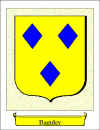 | 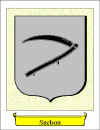 | 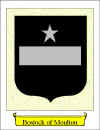 | 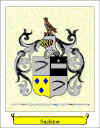 |
Robert Bywater-lees
M, #4881, Deceased, b. 1895, d. 1934
Interactive Pedigree Button
Family: Lily Martha Abbott (b. 1896, d. 1973)
Main Events
| Marriage | Robert Bywater-lees and Lily Martha Abbott were married. |
| User Reference Number | He; 25370 |
| Birth | He was born in 1895. |
| Death | He died in 1934, at age ~39. |
| His wife Lily Martha Abbott died in 1973. |
Sir Warren Bostock
M, #4883, Deceased, b. 1180, d. 1206
Interactive Pedigree Button
Person Exhibits
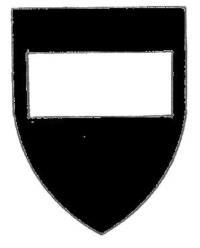
Bostock Arms
Parents
| Father | Ranulph De Bostock (b. about 1155) |
| Mother | Margrett Vernon (b. about 1157) |
Family: Havice Randoll (b. 1180, d. 1242)
| Daughter | Margaret Bostock |
| Son | Sir Sir Henry Gilbert De Bostock+ (b. 1205) |
Main Events
| Marriage | Sir Warren Bostock and Havice Randoll were married in an unknown place. |
| User Reference Number | He; 6750 |
| Occurs | He; 1156; 2 Hen 2 according to the Bostock of Bostock pedigree in the Visitation of Cheshire of 1580 |
| Birth | He was born in 1180 in Pexall, Macclesfield. |
| Residence | He resided about 1200.1,2 |
| His son Sir Sir Henry Gilbert De Bostock was born in 1205 in Pexall, Macclesfield. | |
| Death | Sir Warren Bostock died in 1206, at age ~26. |
| His wife Havice Randoll died in 1242. |
Citations
Annie Unknown
F, #4891, Deceased, b. 1894
Interactive Pedigree Button
Family: John Harasymczuk (b. 1889)
| Daughter | Mary Harasymczuk (b. 1914) |
| Daughter | Olga Harasymczuk (b. 1917) |
| Daughter | Helen Harasymczuk (b. 1918) |
| Daughter | Sophie Harasymczuk (b. 1919) |
| Son | Michael Harasymczuk (b. 1920) |
| Daughter | Annie Harasymczuk (b. 1923) |
| Daughter | Pauline H. Harasymczuk (b. 18 September 1924, d. 5 February 2010) |
Main Events
| Marriage | Annie Unknown and John Harasymczuk were married. |
| User Reference Number | She; 25237 |
| Birth | She was born in 1894 in Austria. |
| Her daughter Mary Harasymczuk was born in 1914. | |
| Her daughter Olga Harasymczuk was born in 1917. | |
| Her daughter Helen Harasymczuk was born in 1918. | |
| Her daughter Sophie Harasymczuk was born in 1919. | |
| Her son Michael Harasymczuk was born in 1920. | |
| Her daughter Annie Harasymczuk was born in 1923. | |
| Her daughter Pauline H. Harasymczuk was born on 18 September 1924 in Cecil, Maryland, USA. |